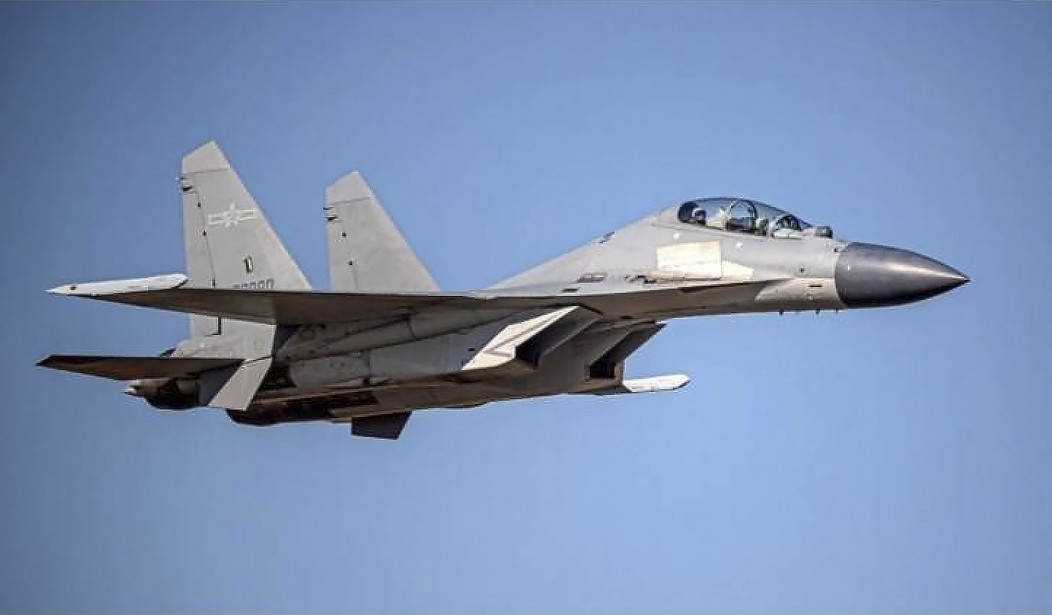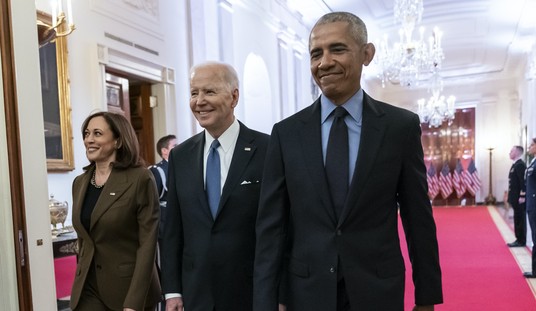Why is the United States Air Force considering nuking its plans for a new, sixth-generation warfighting system at a time when China’s air capabilities are heating up to levels not seen in generations?
Air Force Secretary Frank Kendall recently said that the force needs to remain “open-minded” about its short-term plans for the program due to budgetary constraints. But time is of the essence. Saying you’re open-minded about ceasing development of America’s new warfighting system is tantamount to saying you’re open minded about ceding the United States’ military superiority to President Xi Jinping.
The Department of Defense’s 2022 National Defense Strategy identified China as a concerning “pacing” challenge for the U.S. military. Nothing has happened since that report’s release to suggest that this challenge no longer exists. In fact, the threat posed by the People’s Republic’s defense capabilities has only gotten more severe.
An October 2023 Pentagon report found that China’s military power continues expanding at alarming rates, especially its Air Force and fighter jet fleet, which has experienced a 70% production rate increase.
While China is producing more of its existing jets at record speeds, a problem in and of itself, more problematic is how it remains laser focus on modernizing its fighting systems to outmatch that of the U.S.
China is currently consumed with developing a new sixth-generation fighter system with stealth, integrated artificial intelligence, and attack drone capabilities that will be more modernized and powerful than anything the United States currently possesses. The country anticipates releasing this system by 2035.
That is why, in 2014, the federal government began planting the seeds for a new sixth generation fighter jet program of its own. Now called the Next Generation Air Dominance (NGAD) system, it will feature many of the same modernization updates as China’s system but on a 2030 timeline to ensure the U.S. can adequately deter China and outmatch its growing capabilities.
Recommended
While I understand that congressional budget cuts have put almost every department and agency in a precarious position — the Air Force included — I fail to see how the U.S. can even be thinking about ceasing the effort to modernize its planes at this time.
If the Air Force chooses to do so, the U.S. will have no choice but to rely on F-35 fighter planes that it started producing all the way back in 2001, well before China began utilizing this new technology to its advantage (and against ours).
Data from the RAND Corporation’s Project Air Force demonstrates just how different the Air Force landscape is today than it was in 2001.
Before 2001, the U.S. held a clear advantage over most of China’s air capabilities. However, improvements to China’s aircraft and missile systems caused this lead to slowly start whittling away by 2003.
Then, by 2017, what was once described as impossible happened: China’s overall air superiority reached parity to that of America’s.
Given these startling statistics, how can the U.S. even think about scrapping its modernization plans and relying on a jet that it started with 2001 technology, before the greatest threat the Air Force currently faces — China — was even a passing thought?
Compounding the concerns over ending the NGAD and depending on the F-35 as our top-of-the-line fighter are the reliability issues plaguing the latter.
The Fiscal Year 2023 report released by the Director, Operational Test & Evaluation (DOT&E), the Pentagon’s top testing office, found that the F-35 program has a fleet-wide full mission capability rate of just 30%. That same report detailed how the aircraft experiences critical failures that make them unsafe to fly nearly twice as often as anticipated, with an average repair time of over 130 days. So, even if the federal government did begin building more of these jets with the China threat in mind, relying on them would still prove problematic.
In March, the head of the U.S. Indo-Pacific Command testified before Congress that China, which has the world’s largest Navy, may also soon possess the world’s largest Air Force, if the U.S. doesn’t act quickly. He’s right, which is why the Air Force needs to continue moving forward in the military tech race with China, not backward. It represents the only viable path to keeping the country a step ahead of its leading adversary. And that’s in everyone’s critical interest.
Col. Terry Thompson, U.S. Air Force (ret.), was a war planner at the Pentagon and a wing commander at Dyess Air Force Base, Texas.

























Join the conversation as a VIP Member